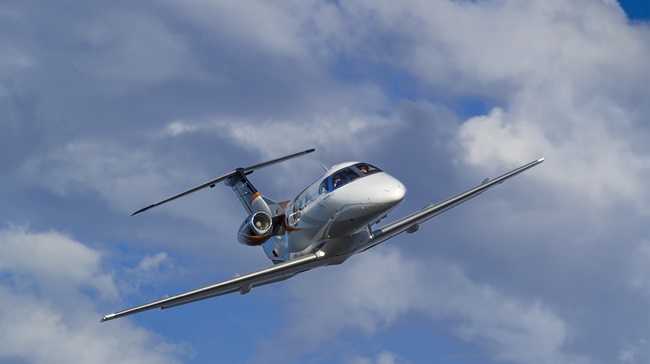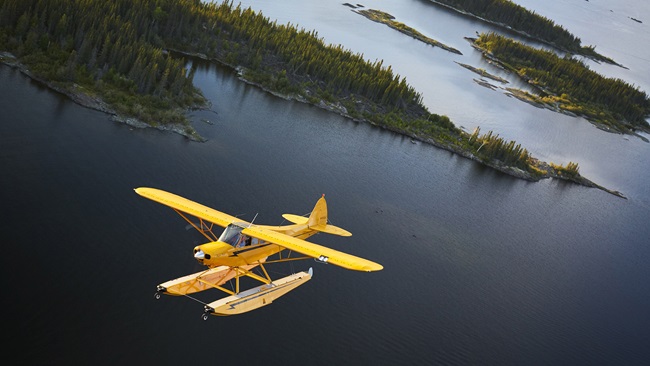Canada: Northern Exposure
An accessible Arctic adventure
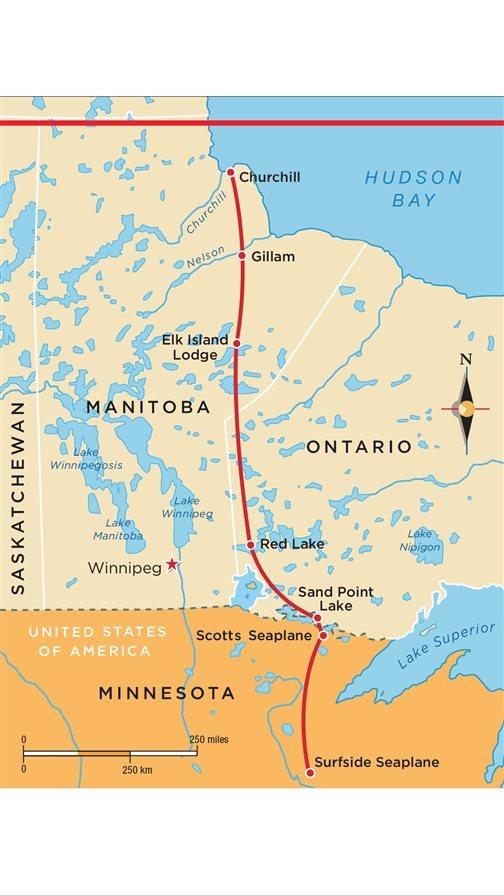 This solitary adult male is hip deep in seawater at a rock-strewn beach on the western edge of Canada’s Hudson Bay. At about 1,500 pounds, the bear outweighs the 1953 PA–18 that’s made this 1,000-nautical-mile northward trek from Minnesota for just this kind of encounter.
This solitary adult male is hip deep in seawater at a rock-strewn beach on the western edge of Canada’s Hudson Bay. At about 1,500 pounds, the bear outweighs the 1953 PA–18 that’s made this 1,000-nautical-mile northward trek from Minnesota for just this kind of encounter.
More bears are visible farther up the beach, their coats dirty gray from sand and soil. All are alone, spaced at least a half-mile apart, except for a few sows with one or two clingy cubs at their sides.
Several moose appear where the spongy green/brown tundra meets the beach. A herd of roughly 100 caribou gathers nearby, about a third of them cavorting in the 36-degree water. Just offshore, pods of beluga whales are easy to spot from the air, their soap-white skin making them visible even when submerged beneath the tea-colored waves.
“This is what we came for,” says Brian Schanche, a floatplane flight instructor and arctic tour guide who organized this expedition of seven floatplanes for a journey that began near Minneapolis. “You don’t see this variety or abundance of wildlife anywhere else in the world.”
And you don’t need a complex, IFR airplane—or a floatplane—to participate in this kind of adventure. Even modest general aviation airplanes are easily capable of covering the distance.
Schanche (pronounced Skankee) leads our gaggle in his Cessna 185 and the other airplanes are spaced out several miles behind him. We all report the exotic animals we see until our calls get so repetitive they’re hardly worth making.
I slide back the Super Cub’s left window and let the bracing sea breeze swirl through the cockpit.
“This is unreal,” a fellow traveler says on the radio.
“Except that it’s not,” Schanche answers. “All this is completely real.”
Arctic survival
Most of the pilots on this trip are experienced seaplane fliers, and they travel in groups for mutual support, discount fuel, shared lodging—and amusement.
At a pre-trip briefing over beer and pizza, participants address their arctic survival strategies—a serious subject that doesn’t stay that way long. One pilot brings a shotgun, and others have fishing equipment, waterproof matches, personal locator beacons, and satellite messengers.
Another quips he’s bringing running shoes to out-sprint his passenger if they’re ever confronted by a bear.
“No one can outrun a bear, but I can outrun [my passenger],” Husky pilot Andy Brown of Minneapolis says of his friend Jeff Duncan. “I brought him because of his bad knees.”
All seven floatplanes heading north to Churchill, Manitoba, are single-engine models. Ann Heimbach, of Duluth, Minnesota, owns a straight-float Cessna 180 and she’s flying with a pilot friend, Amy Marincel; Barry Power, also of Duluth, has owned and flown his Cessna 206 for years and grew up flying with his dad in similar airplanes; Keith and Lori Foerster of Minneapolis are flying a Husky on straight floats, and Travis Overbye, of Farmington, Minnesota, flies his Cessna 206 with amphibious floats and two passengers.
I’m the least-experienced seaplane pilot among them, and I’m flying the slowest airplane. The Super Cub with amphibious Wipaire floats cruises at 90 miles an hour, but it’s got advantages that offset its less-than-blinding speed.
First, its relatively light weight allows the Super Cub to get off the water in less distance than any other airplane in our group. It’s also got an ElectroAir electronic ignition in place of one magneto, and that simplifies all starts—especially the hot kind—and makes the Super Cub’s Lycoming O-320 engine particularly fuel efficient at higher altitudes. The airplane also carries 48 gallons of fuel (plus 10 more stored in plastic cans inside the floats), so it can cover as much distance as faster, thirstier kinds.
A polar bear looks up at a passing Piper Super Cub with curiosity, its long neck bending to follow the yellow airplane's path.But the best aspect of the Super Cub is that the Canadians (and Americans, for that matter) adore it. At every fuel stop, Canadians accustomed to float de Havilland Beavers, Otters, and Noorduyn Norsemans coo at the low-tech adventure bird.
“I’ve owned a lot of airplanes,” one Canadian pilot says wistfully at a fuel stop in northern Manitoba. “But the only one I regret parting with was my Super Cub.”
Super Husky
Our trip begins at the scenic Surfside Seaplane Base near Minneapolis on a summer morning with the water surface as reflective as a golden mirror.
I leave the dock following two Aviat Huskys, and one of the pilots asks rhetorically which of us will be the first to mistakenly take off with water rudders down, a faux pas that obligates the offender to buy the next case of beer. I silently thank him and reach down with my right hand and raise the chain that retracts the water rudders.
The two Huskys settle into cruise flight, and the lighter, straight-float version is about two miles an hour faster than its amphibious littermate at the same economy power setting (23 inches of manifold pressure and 2,300 rpm). I push the Super Cub up to 2,600 rpm to match their speed over the farmland of central Minnesota.
The amphibious Super Cub is rock steady in pitch and roll in smooth air, but it requires nearly constant rudder pressure to suppress yaw. It’s also more lightly loaded than the Huskys, so I carry some of their bulky gear, including Brown’s guitar.
“Feel free to use it as a paddle,” he offers.
The three of us fly in loose trail, and other pilots check in from time to time with updates. I absent-mindedly refer to the Super Cub as a “Super Husky,” and the radio ribbing is relentless.
“Having an identity crisis, are we?”
“That must be Super Dave flying that Super Husky.”
“Did you say that Super Husky is amphibious? Or did you mean ambidextrous? Or androgynous?”
Fish sensor
Our first fuel stop is at Scott’s Seaplane Base in northern Minnesota, where Crane Lake straddles the Canadian border.
We splash down on the U.S. side, confirm our eAPIS electronic customs forms are properly filed, then water taxi to the Canadian customs dock at Sand Point. Since we’re technically boaters at the moment of crossing, no international flight plan is required. We answer the Canadian customs agents’ questions and are soon on our way again, airborne this time.
The six-cylinder Cessnas fly together at about 120 knots, and the four-cylinder Huskys and Super Cub plug along at 90. The slower airplanes get a head start leaving Sand Point, so all of us converge two hours later at the seaplane base at Howie Bay. The sudden influx of American N-numbered aircraft overloads the Canadian controller in that sector. As we taxi on the water, he warns a Canadian pilot approaching Howie Bay that “a whole flock of Novembers” just arrived.
We take turns fueling at the dock, and then launch for Gods Lake in northern Manitoba, where we’ll stay overnight at the Elk Island Lodge before continuing north.
As we fly north the terrain gets flatter, wetter, and rockier. If Minnesota is the land of 10,000 lakes, Manitoba must have 100,000. Tall pines in the southern part of the province give way to scrawny, gnarled ones.
Schanche tells the group his internal “fish sensor” is pegged, and he points out spots where trophy lake trout, northern pike, and walleye abound.
At Elk Island, the amphibians use the gravel runway and the floatplanes touch down on the water, an approach made intimidating by a series of boulders that rise out of the water near the landing area.
“Don’t let those rocks freak you out,” Schanche says. “The water’s so clear it looks shallower than it really is.”
The fishing is so good that some in our party are tempted to stay. But the wildlife we all came to see is still a few hundred miles north on the Hudson Bay.
The tailwind holds, but thick gray clouds appear about 50 miles from the coastline, and the ceiling steadily drops. We land at Gillam in a pouring rain and 25-knot winds. But the sky to the northwest soon clears and we follow the Nelson River to the coast, then make a left turn and descend over the beach, where wildlife appears in abundance.
At a distance, polar bears are hard to distinguish from boulders, and a still moose is remarkably well camouflaged against the tundra. But closer inspection reveals them as the magnificent creatures they are.
“Don’t spook them,” Schanche says. “And no circling down low.”
Canadian rules
Dock space in Churchill is tight, so the three amphibians in our group (a Cessna 185, Husky, and Super Cub) go to the main airport, a Cold War outpost with a sprawling 9,200-foot runway.
Canadian air traffic rules are similar to American ones, but not identical. I call “Churchill Radio” at 10 miles and tell the controller I’ll enter the “control zone” (a ring with a five-nautical-mile radius) from the southeast. He asks me to report downwind, final, and then clear of the runway, all standard.
There’s no avgas for sale at Churchill, only jet fuel. Fortunately, Schanche stashed two 55-gallon drums in town, and some of the pilots in our group carry extra avgas in jerry cans inside their floats. I’ve got 10 gallons packed away in the Super Cub, and combined with what’s still in the tanks it’s more than enough to get to the next fuel stop.
As we secure the airplanes, low clouds and rain show up in advance of a low pressure system spinning down from the Arctic. We head to the Lazy Bear Expeditions and make arrangements for even more wildlife viewing during the next two days. We’ll see whales by boat, kayak, and there’s even an option to swim with them in dry suits.
“The whales are as curious about us as we are about them,” says Wally Daudrich, founder and builder of Lazy Bear Lodge, as well as a private pilot and wildlife guide. “They get close enough to touch.”
A start
Our stay in Churchill is extended by rain and fog, and our group gets desperate for things to do in the economically ailing town of 1,000 people.
Brown learns of a “meat raffle” at the local legion post and we decide to go. Our group buys up dozens of raffle tickets to support the fundraiser, but our charitable intent backfires when we start winning almost every drawing. By the time Marincel claims two frozen steaks in a row, she’s roundly booed by the 100 or so attendees. We discreetly hand over winnings to a local sled dog trainer.
We’re itching to get back in the air by the time the skies finally clear, and our patience is rewarded with another tailwind. I fly higher than the others, at 7,500 feet, to maximize the push and keep up with my faster fellow travelers. When another pilot asks what I’m doing up there above the clouds, the slow-airplane jokes begin anew.
“Seeing those clouds go by makes him feel like he’s actually getting somewhere,” one says.
XM satellite reception returns about 250 miles from the U.S. border, and having music (and weather radar images) makes me feel like we’re almost home.
We stop for our last night together at Trout Lake, where the Cat Island Lodge is only accessible by water, and all seven aircraft tie up at a sandy beach. Brown muses about our soon-to-end journey and wonders aloud how much the walleye fillets he’s bringing home cost on a per-pound basis.
“That’s got to be some really expensive fish,” he says. “But this trip is about the journey, the intangibles.”
Marincel reflects on the group’s unforced compatibility. Few participants knew each other when the trip began, yet they were planning future flights together before it ended.
“Anyone who wants to fly a trip like this has got to have something right with them,” she says. “Or at least, they have the same thing wrong with them. And that’s a start.”
Email [email protected]

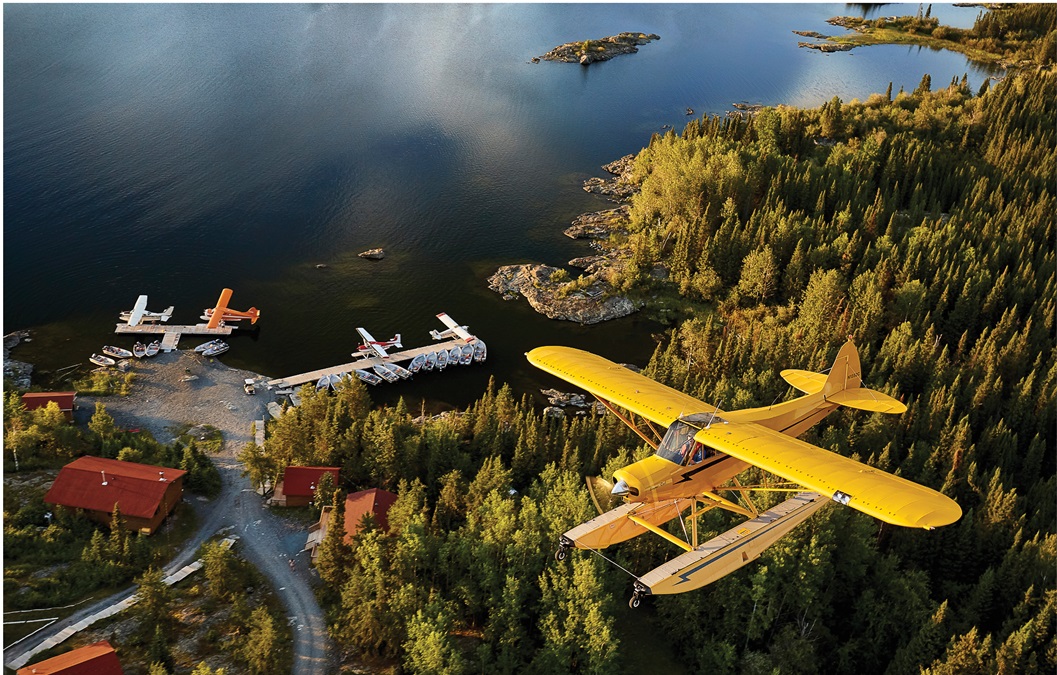
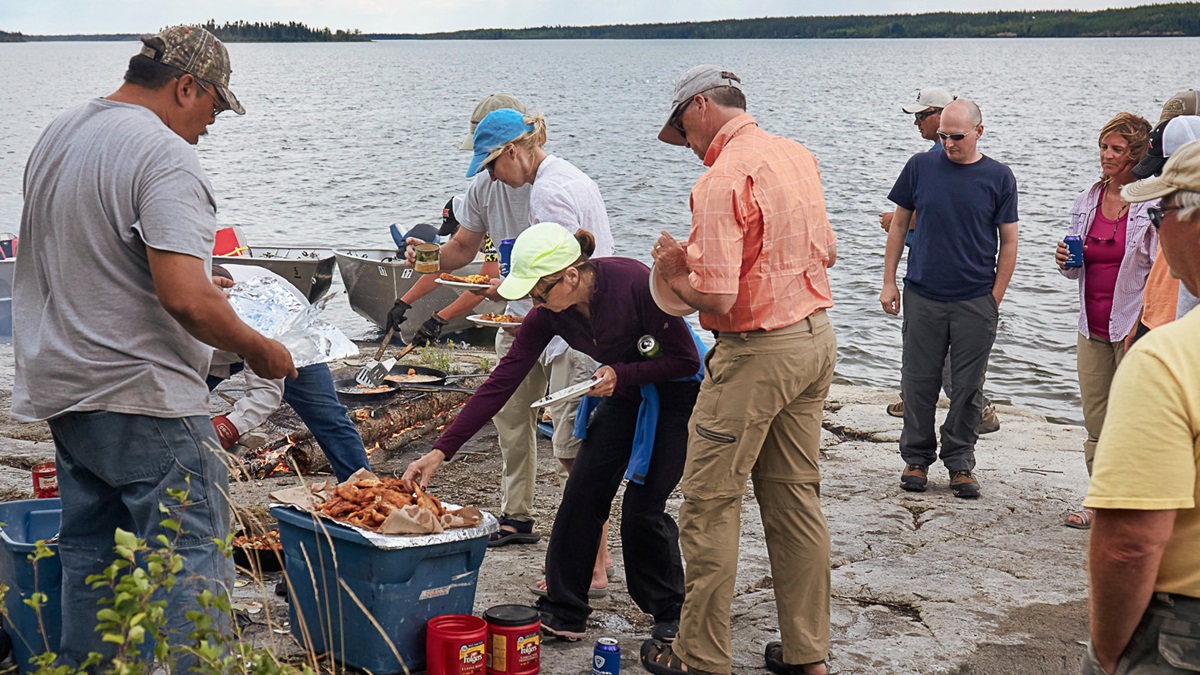
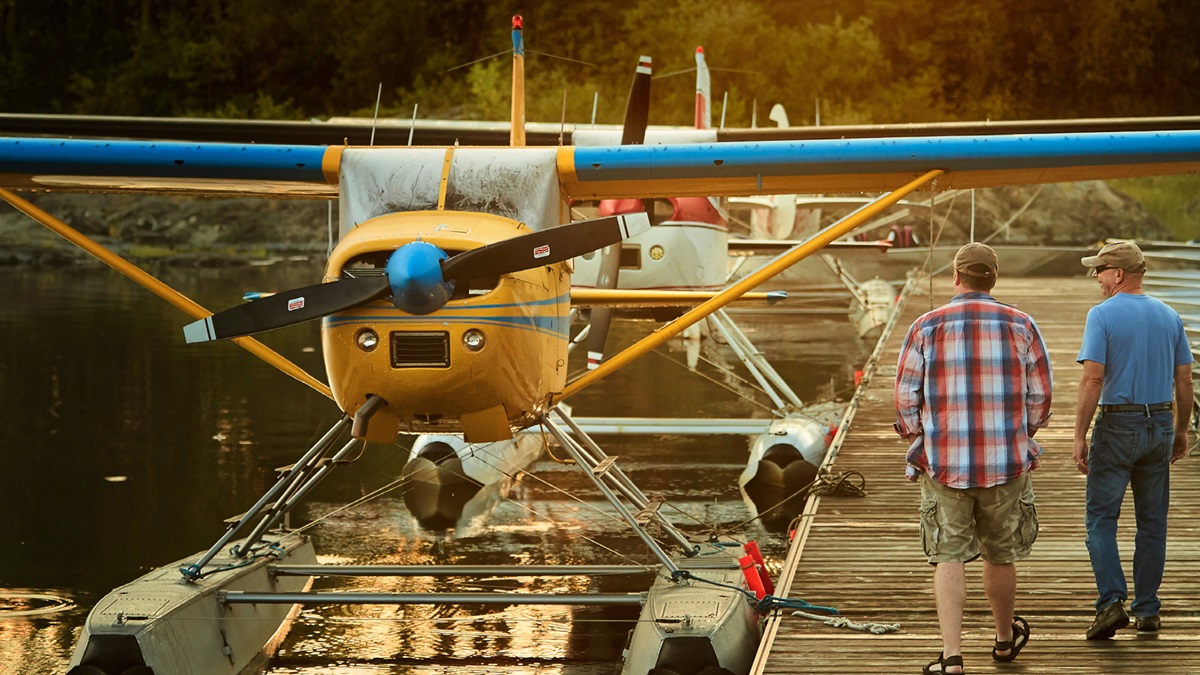
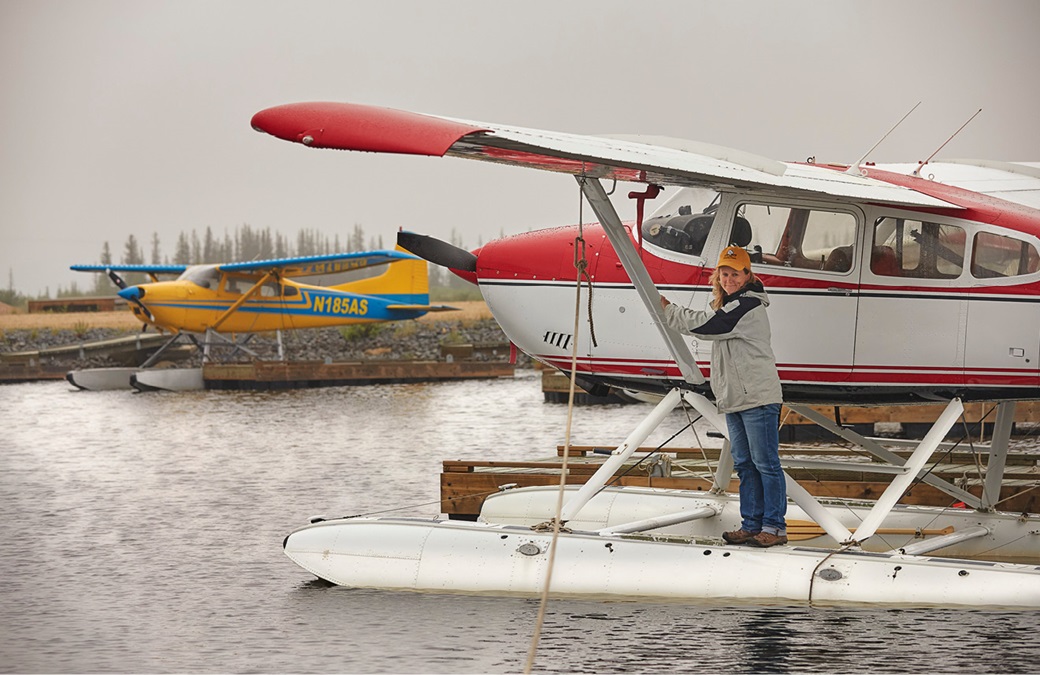
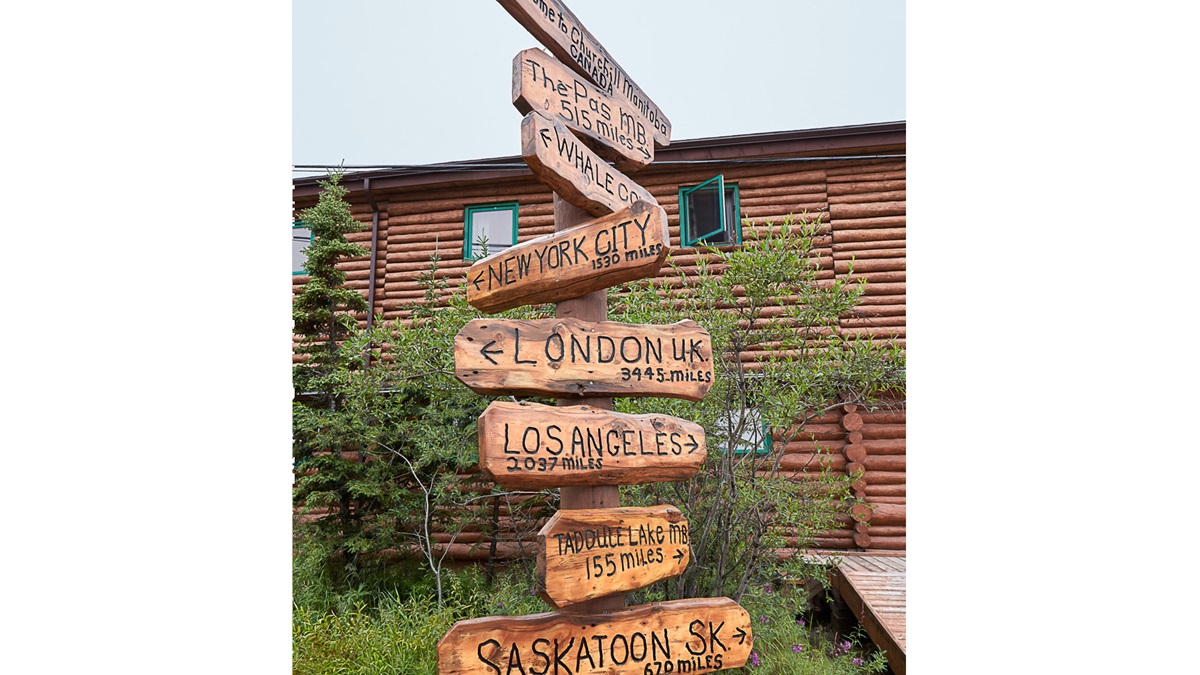
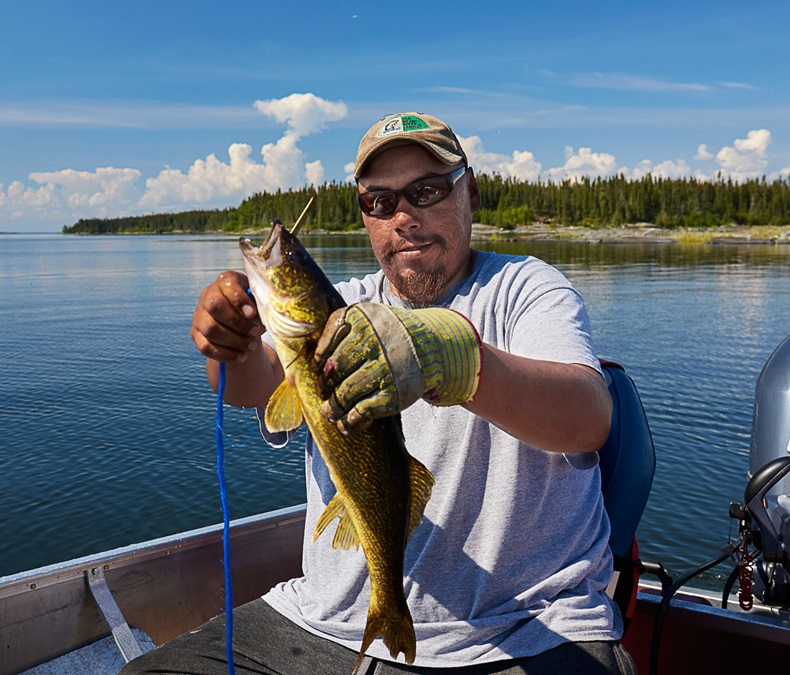
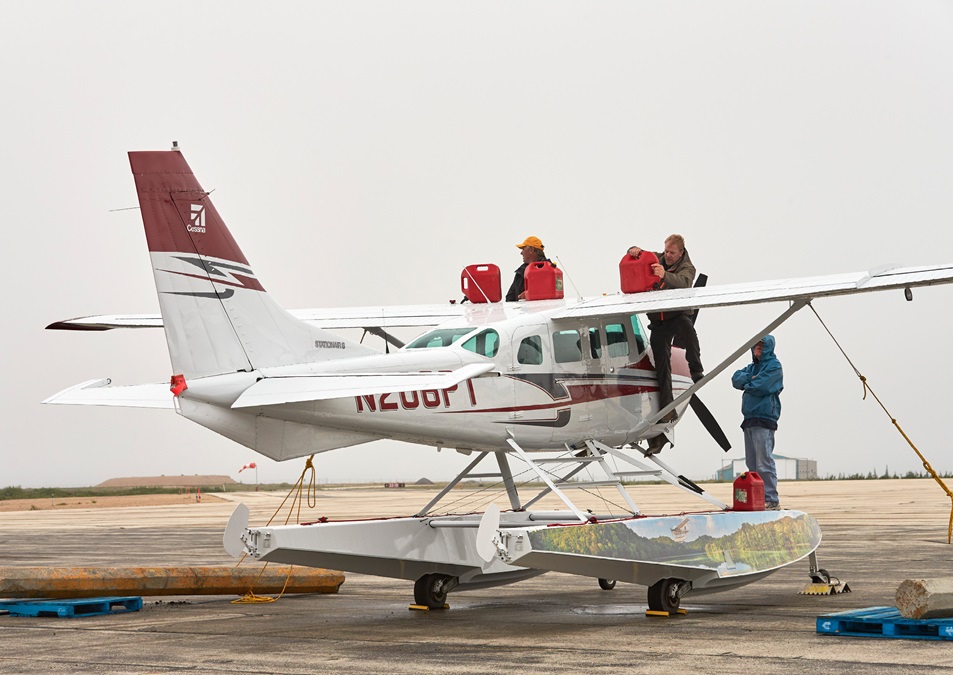
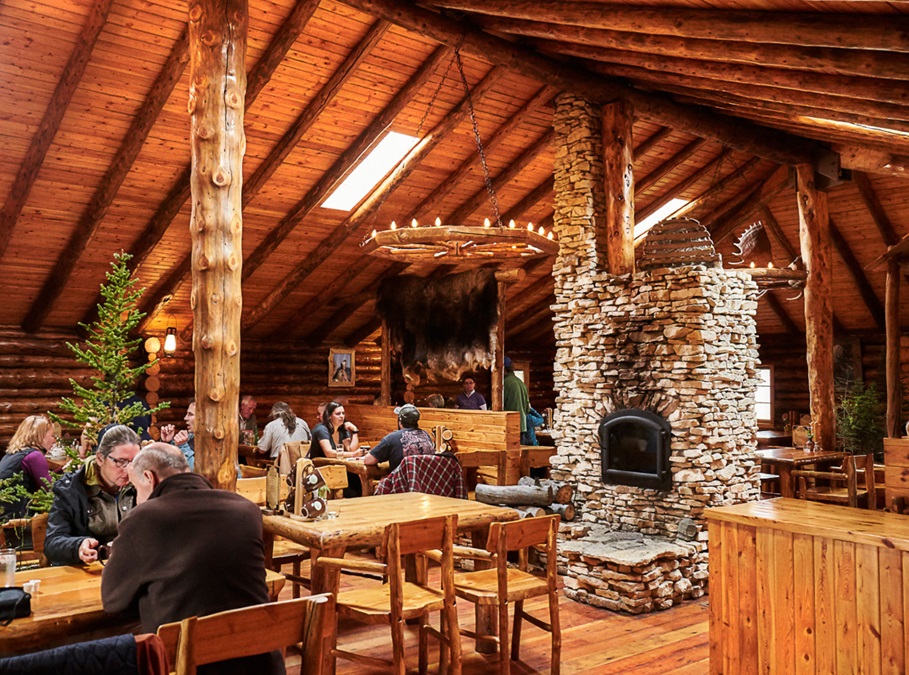
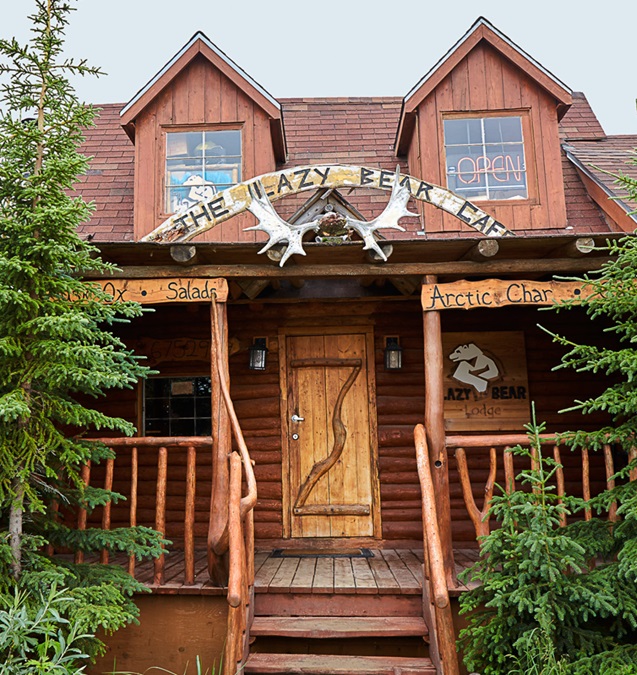
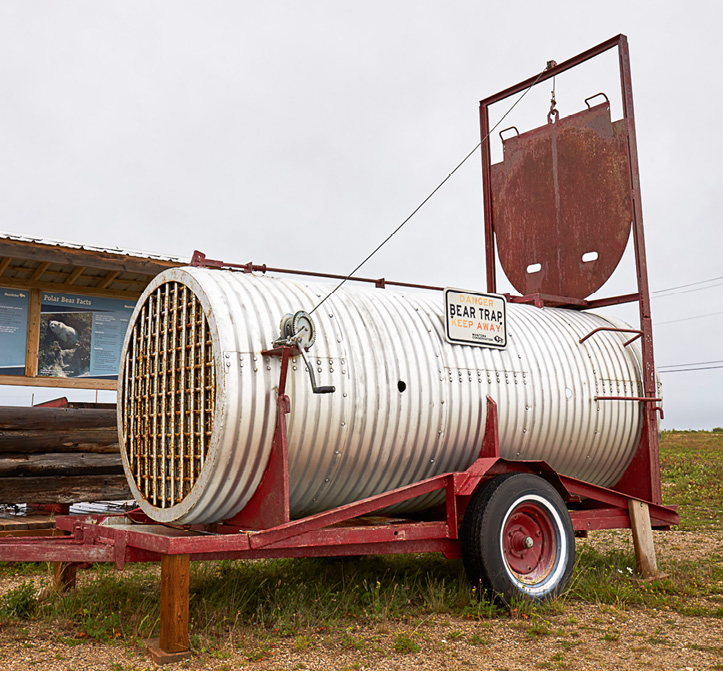 Polar bear trap
Polar bear trap